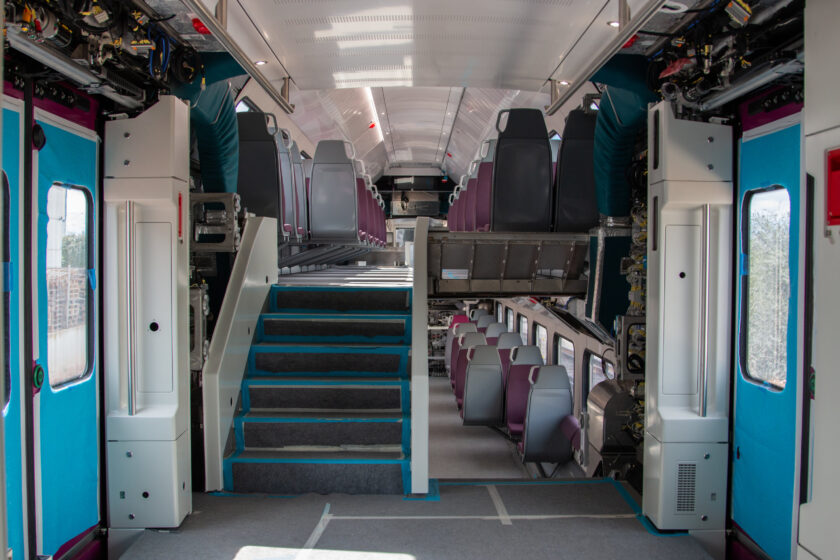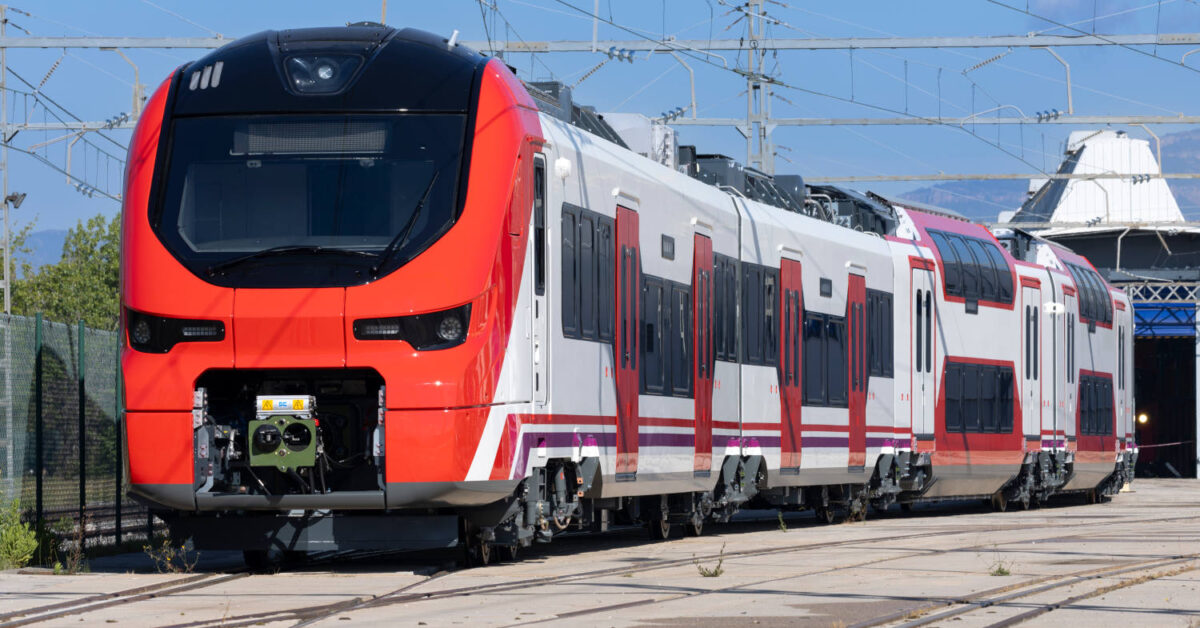The new Cercanías (suburban) trains of Renfe’s series 452 and 453 continue their certification process and now have a target date for introduction into passenger service.
During the presentation of Renfe’s maintenance depots development plan, the heads of the Renfe Fabricación y Mantenimiento division confirmed that the fleet renewal for short-distance services will begin in the second half of 2026.
Catalonia to receive only 100-metre series 452 units
As announced in January, 72 Alstom-built class 452 trainsets, each 100 metres long, will be allocated to Catalonia. To simplify maintenance operations and due to the proximity of Alstom’s manufacturing facility, the Rodalies network will not receive any of the longer class 453 sets.
Although 20 Stadler-built 200-metre units had initially been earmarked for this region, they will now be reassigned to Madrid or other commuter networks. Renfe justifies this by pointing out that few Rodalies lines have platforms long enough to accommodate 200-metre trains, and in many cases, extensions are either unfeasible or not planned. Workshop capacity is also limited for handling such long formations.
However, on routes where longer sets can operate, class 452 units will be run in double formation, as already occurs with Civia class 465s. The delivery schedule for Catalonia’s units spans 2026, 2028, and 2029. In 2027, the trains produced at Alstom’s Santa Perpètua plant will be destined for other Cercanías networks.
200-Metre Trains for Valencia?
Madrid will receive both class 452 and 453 units (100 and 200 metres respectively), but Renfe has not yet disclosed the full allocation of the 280 high-capacity commuter trainsets on order.
Under the depots plan, it is notable that the new Malaga depot for PSO (Public Service Obligation) stock includes a 200-metre maintenance road. It allows for up to eight trains to be serviced simultaneously. However, platform’s don’t allow trains longer than 100 m.
Another depot designed for Cercanías operations in Valencia will also feature three 200-metre roads, capable of accommodating up to 24 formations.

While these facilities could otherwise maintain twice as many 100-metre units, their dimensions may hint at how Renfe intends to distribute the longer trains.
As for Madrid’s commuter network, the only confirmed route for the new trains is line C-3. The construction of a new maintenance depot at Aranjuez, with capacity for 24 200-metre units, all but confirms this line as the main operating corridor for the longer class 453 sets. Additional depots sized for 200-metre compositions will come on stream at Alcalá de Henares and Fuencarral in 2029.
Deliveries to Start in the First Quarter
According to internal sources within Renfe’s Manufacturing and Maintenance division, the current timeline foresees the first units of both series being delivered to the operator during the first quarter, once type-approval has been completed. Following delivery, the trains must be homologated for the specific lines on which they will operate, and drivers trained for the new rolling stock — a process expected to take several months before entry into service.
What About the Metre-Gauge Trains?
The biggest uncertainty in Renfe’s fleet renewal programme concerns the new metre-gauge Cercanías trains. So far, only six units intended for Madrid’s Cercedilla–Cotos line have been delivered, and will enter service once works on the route are completed.
By contrast, little has been heard about the batch destined for the northern narrow-gauge network since costs rose by 12% following the clearance-profile scandal. Unofficial sources suggest they are currently under construction at CAF’s Beasain plant.
